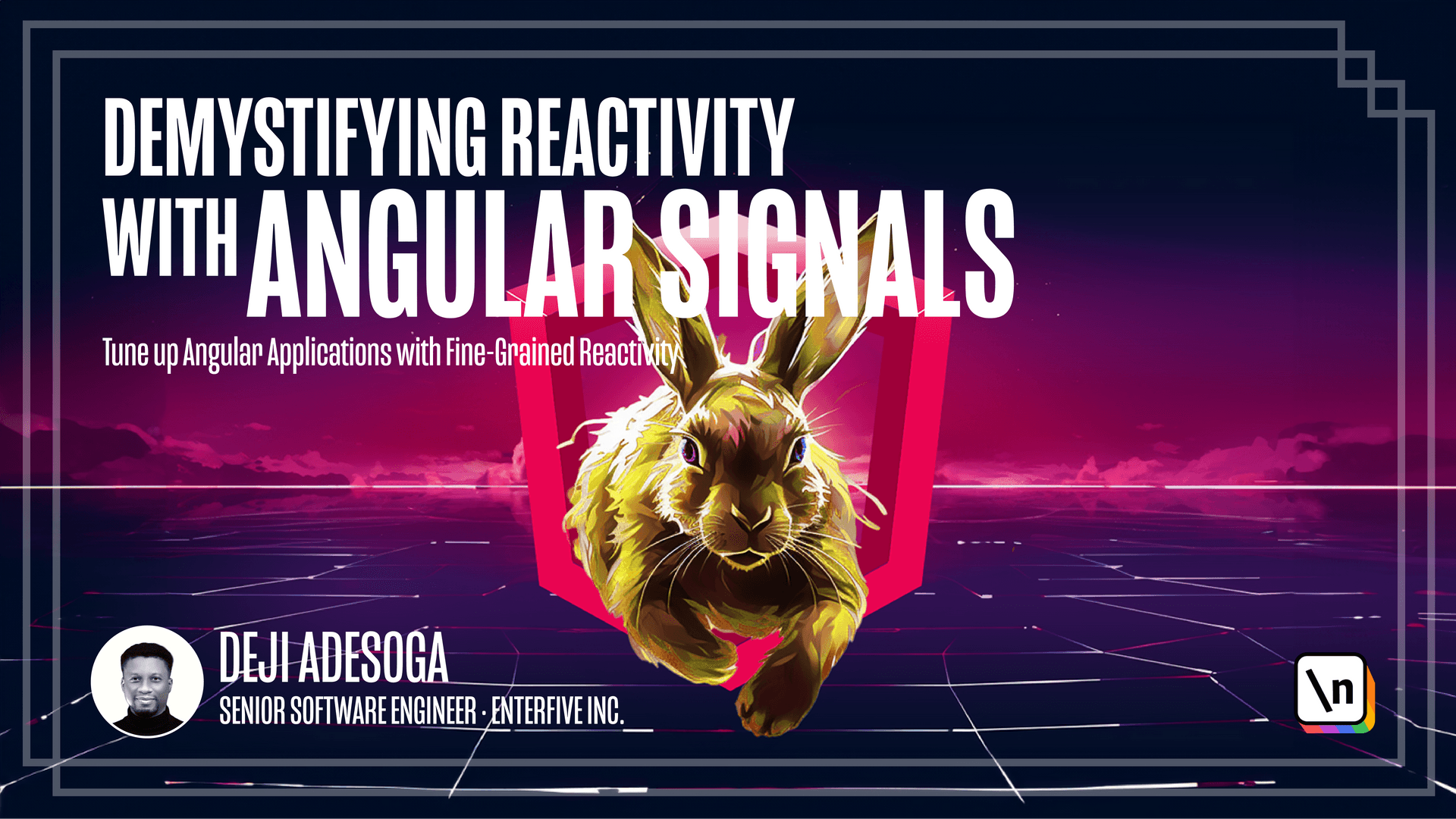Wrapping up the Course
We will do a review of all the concepts learned in the course and also look at the upcoming features to be integrated into Signals.
This lesson preview is part of the Demystifying Reactivity with Angular Signals course and can be unlocked immediately with a \newline Pro subscription or a single-time purchase. Already have access to this course? Log in here.
Get unlimited access to Demystifying Reactivity with Angular Signals, plus 90+ \newline books, guides and courses with the \newline Pro subscription.

[00:00 - 00:18] A big congratulations to you as we finally come to the conclusion of this course. We've gone through four intense modules that covers the most recent updates in Angular 17, specifically on Signals. Let's take a quick recap into what we've learned so far in this course.
[00:19 - 00:57] In this course, we're able to learn how to work with standalone components in Angular. We're able to learn how to work with lazy loaded routes in Angular as every route in our application was created using the functional approach. We're able to learn what deferrable views are and how to pre-fetch the data coming from our backend. We were also able to utilize the newly built-in control flows instead of making use of the *ngFor* directive. We're able to make use of the @for block as well as the @if blocks which is newly introduced in Angular 17 and most importantly, we're able to manage the entire states of an Angular application using Signals.
[00:58 - 01:24] As the Angular team continues to work on more improvements on the framework, here are a list of features that we added to Signals in the next updates. You can look forward towards the introduction of Signals based components, Sign als based inputs, Signals based queries and also you can look forward to the introduction of application rendering, life cycle hooks as well as outputs in Signals based components.
[01:25 - 02:12] Thank you so much for following me to the end of this course. I believe you now have more than enough results to consider upgrading your Angular application to the latest version so as to utilize the use of Signals as well as the newly introduced updates, some of which includes the deferrable views, the newly built-in control flows as well as standalone components. If you have any questions, you can reach me on the new line Discord channel which is at newline.co/discord and if you want to get more JavaScript based tutorials, you can subscribe to my YouTube channel at youtube.com/@thecodeangle. In my channel, I cover technologies which are JavaScript-related like Angular, React, Node.js and even vanilla JavaScript.
[02:13 - 02:21] Thank you very much.